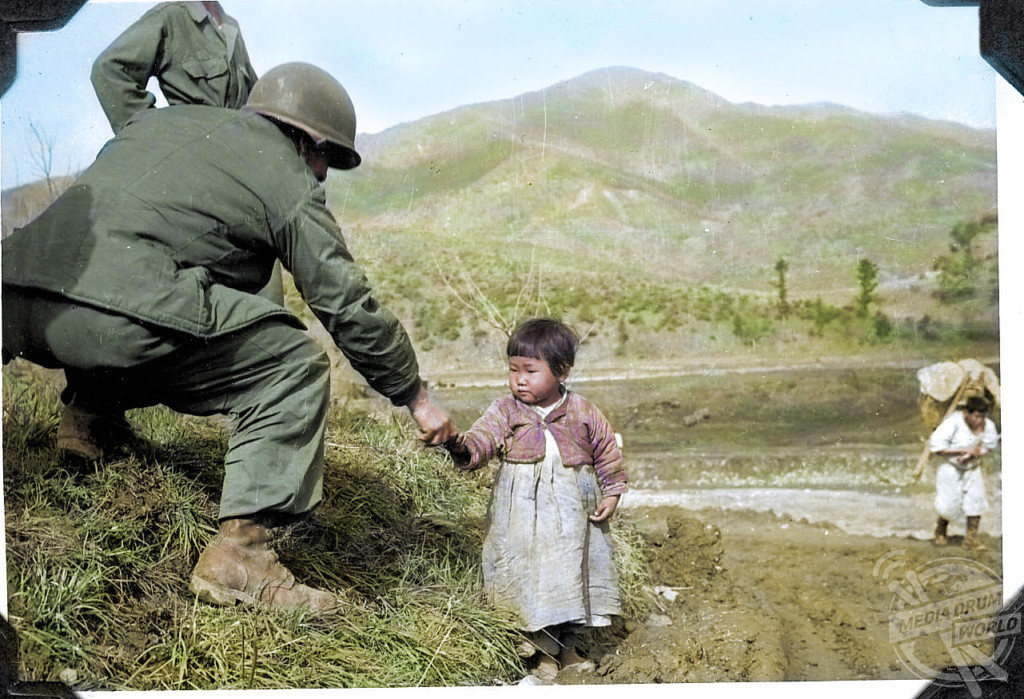By Mark McConville
THE HORRORS of the Korean War have been brought into the twenty-first century in a series of stunning colourised pictures.
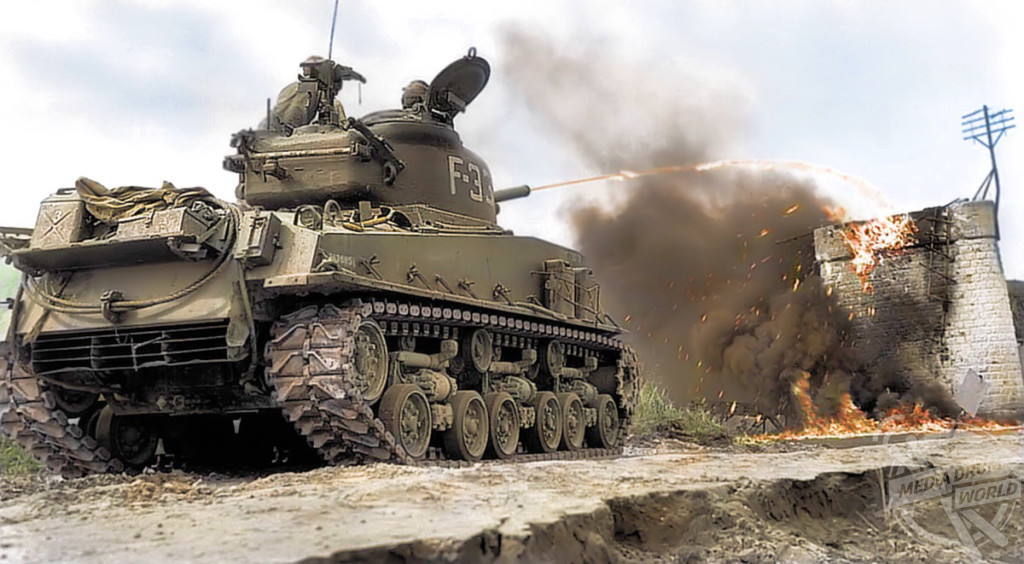
Mediadrumimages / Royston Leonard
The incredible images show Lieutenant Colonel John Hopkins leading the singing of the Star Spangled Banner during memorial services held in the field, USMC Major John Glenn inspecting his plane in 1953 after emerging unhurt despite 375 holes in it and F-51 Mustangs at Cheyenne Municipal Airport in 1949.
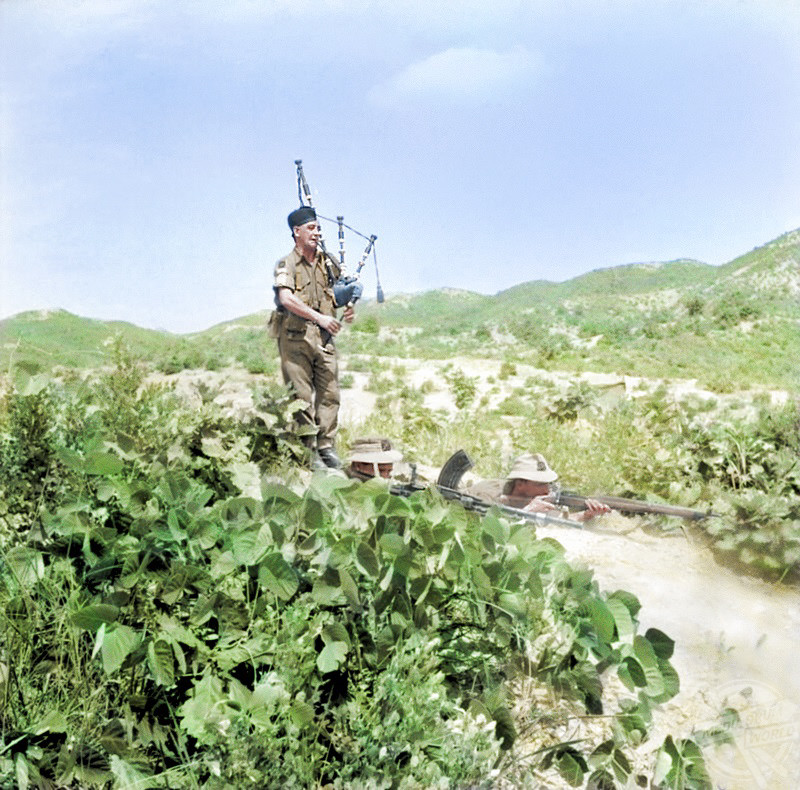
Mediadrumimages / Royston Leonard
Other striking shots show soldiers and vehicles struggle through the snow in terrible conditions, a US soldier giving a young Korean child a gift and a Sherman tank using a flame thrower to destroy anything in its path.
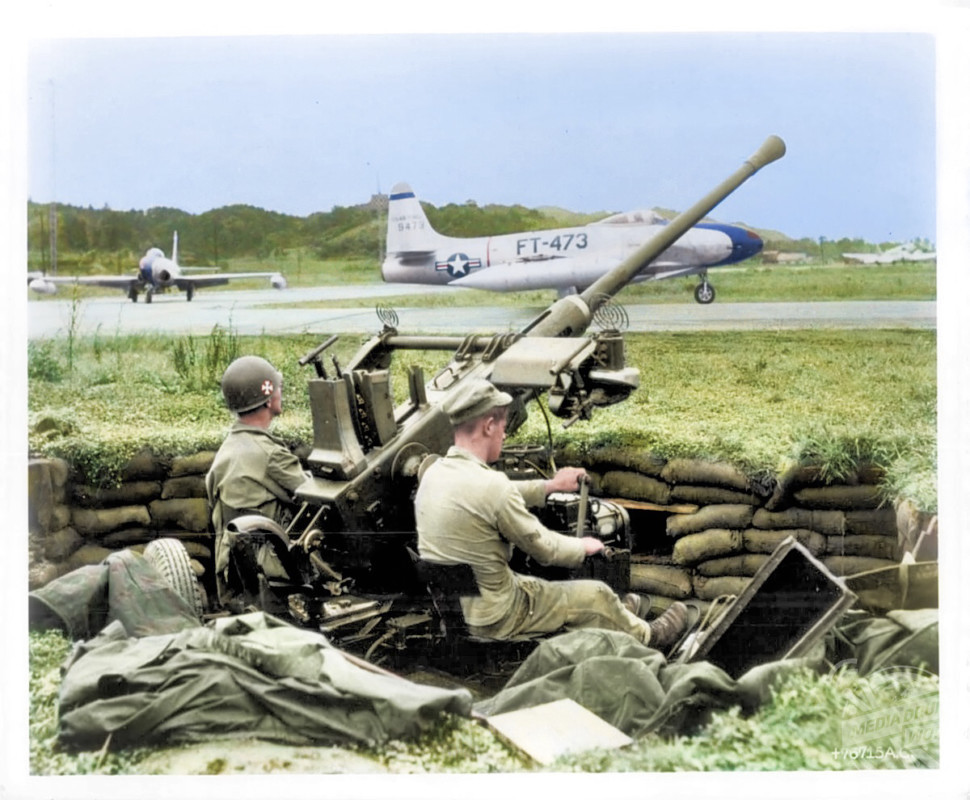
Mediadrumimages / Royston Leonard
The original black and white photographs were painstakingly colourised by electrician Royston Leonard (55), from Cardiff, Wales, with each snap taking between four and five hours to complete.
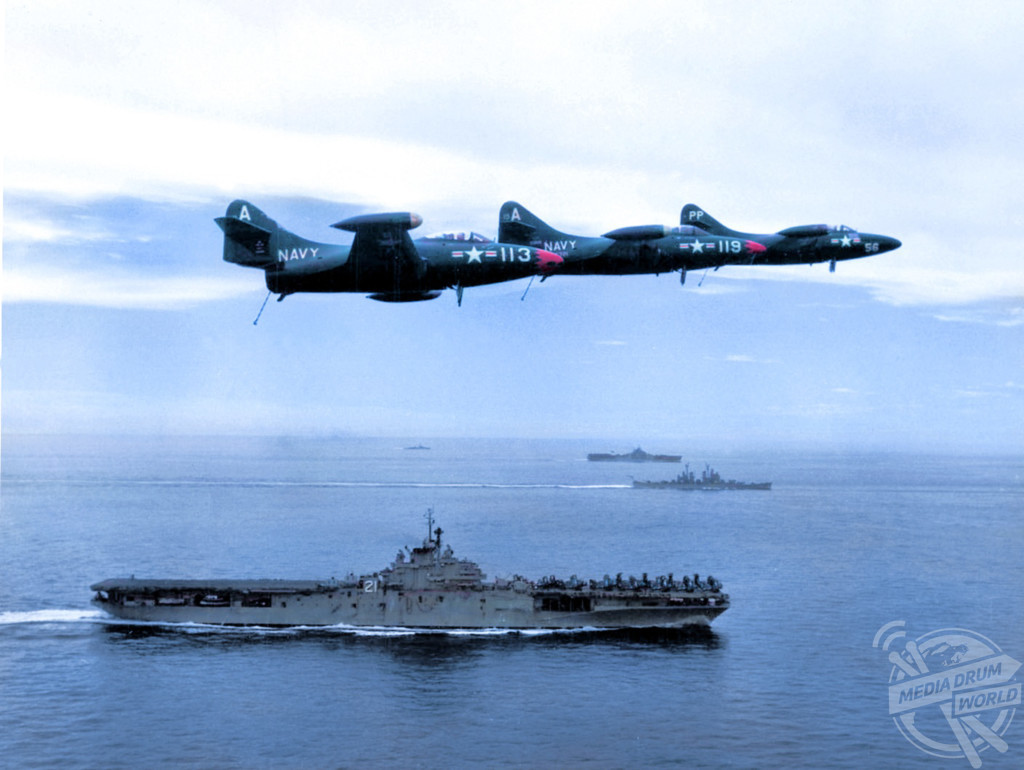
Mediadrumimages / Royston Leonard
“Adding colour brings to life the horror of war, of the trenches and not just another old black and white photo from long ago,” he said.
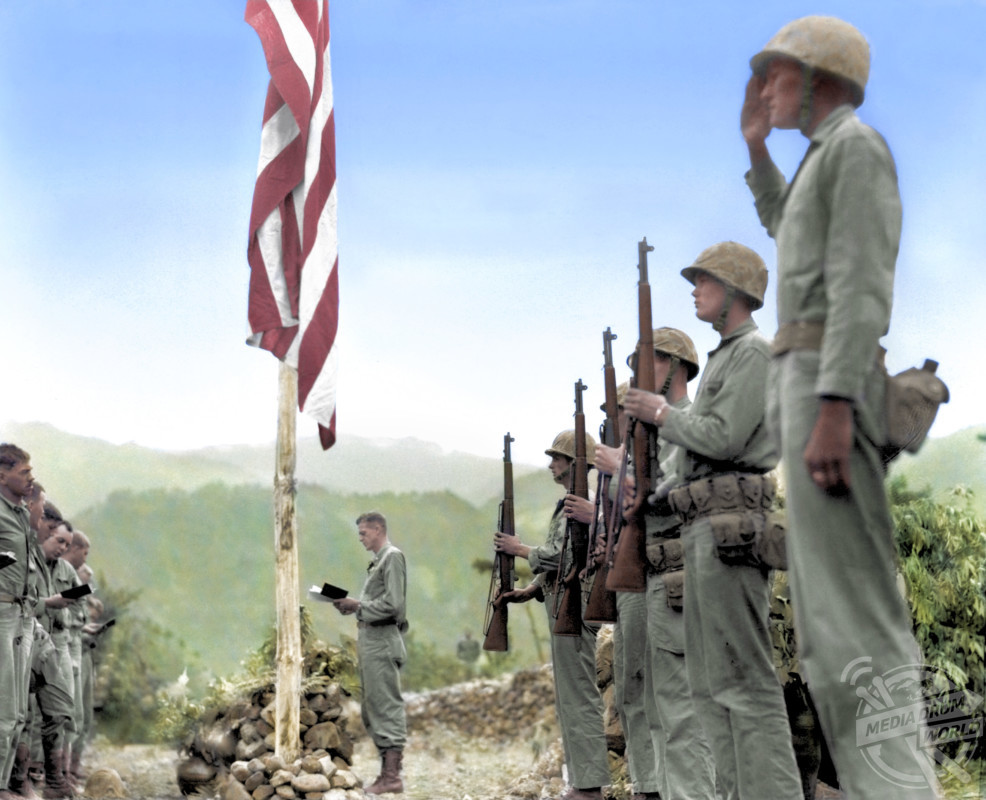
Mediadrumimages / Royston Leonard
“We must never forget and teach all our children so that it never happens again. The pictures are not nice but then nor is sending loved ones to war.”
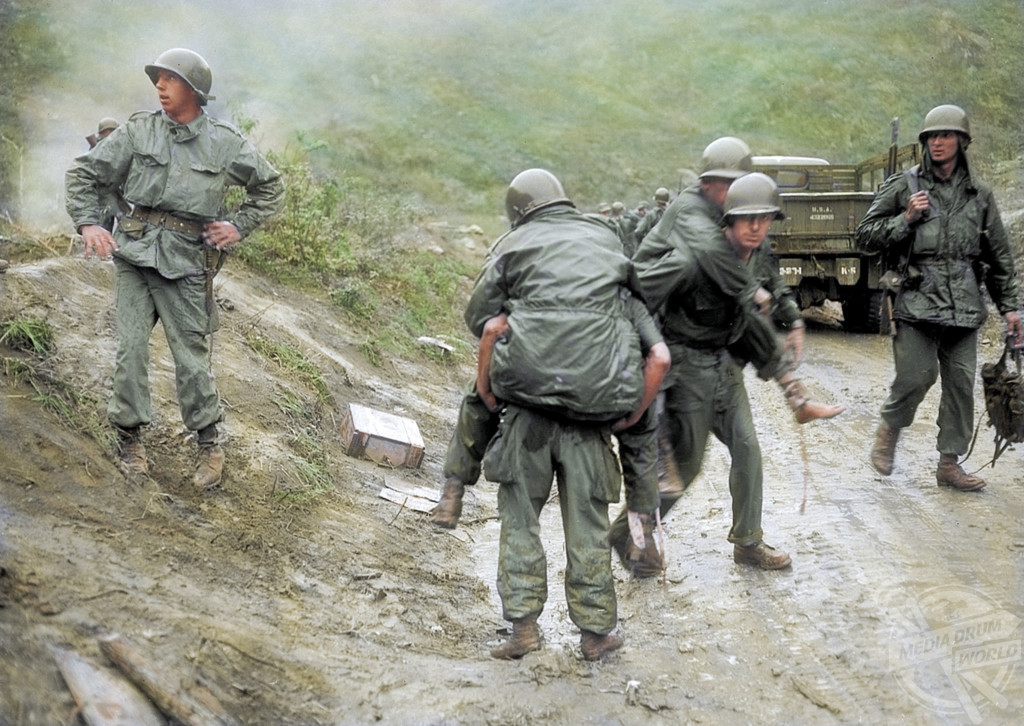
Mediadrumimages / Royston Leonard
The Korean War began when North Korea invaded South Korea. The United Nations, with the United States as the principal force, came to the aid of South Korea. China came to the aid of North Korea, and the Soviet Union gave some assistance.
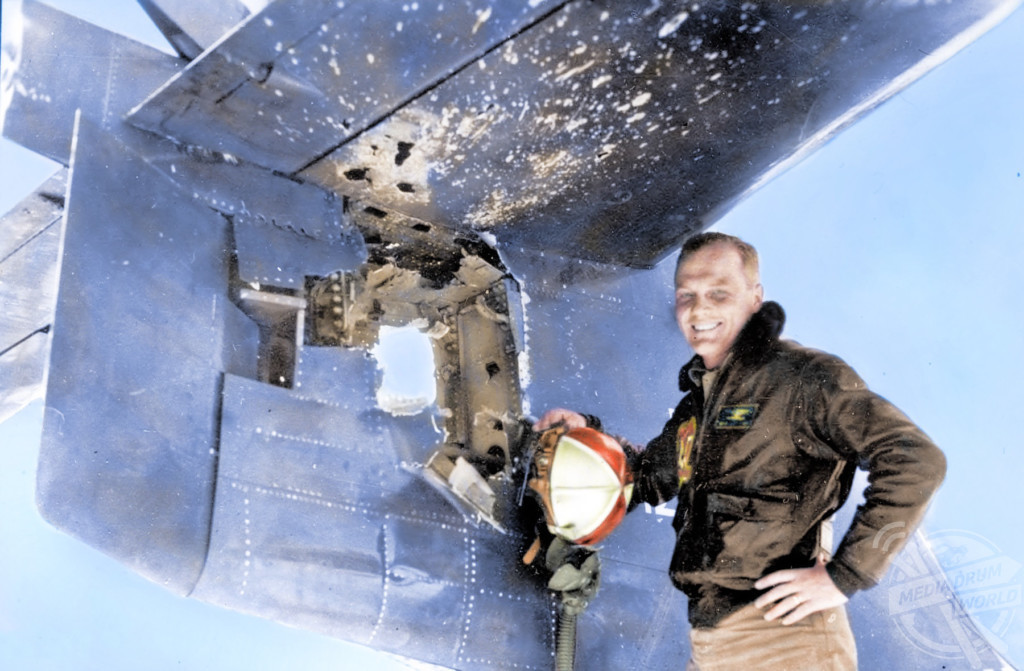
Mediadrumimages / Royston Leonard
The fighting ended on 27 July 1953, when an armistice was signed. The agreement created the Korean Demilitarized Zone to separate North and South Korea, and allowed the return of prisoners. However, no peace treaty has been signed, and the two Koreas are technically still at war.
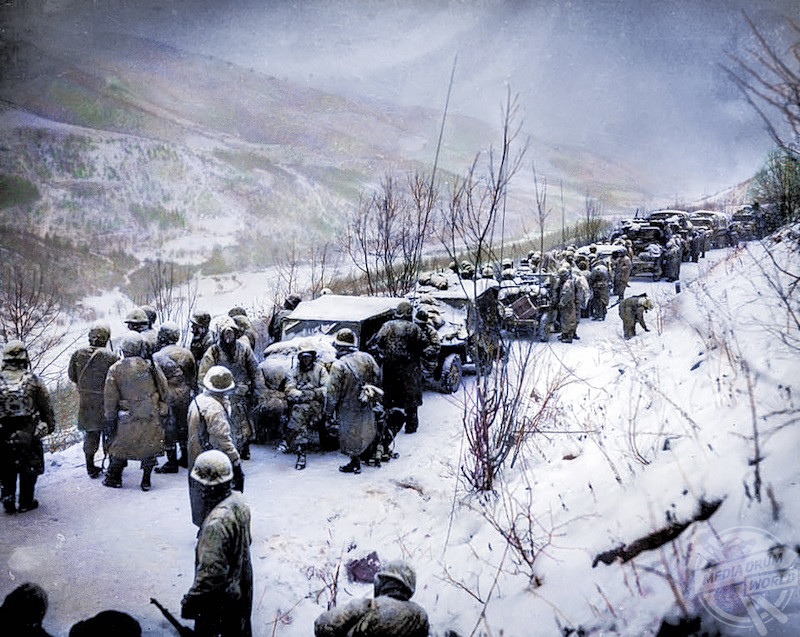
Mediadrumimages / Royston Leonard

